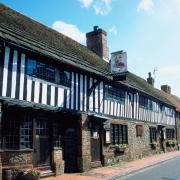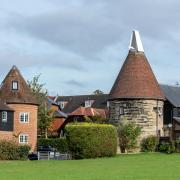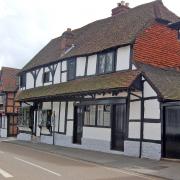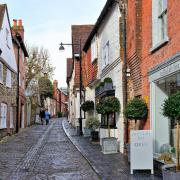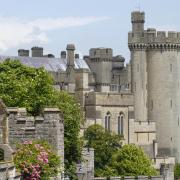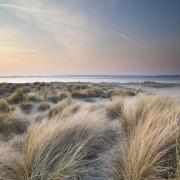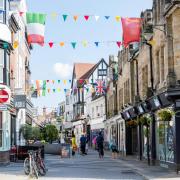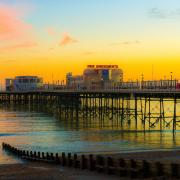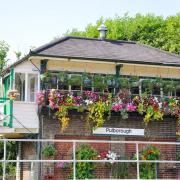After the Norman invaders triumphed on the battlefield on 14 October 1066, Sussex was quickly subjugated as William began to organise his kingdom. Steve Roberts finds out what happened next...

AS the sun set on a Sussex battlefield the groans of the dying petered out, a lament to an England and Sussex destined to change beyond recognition. The field was Hastings, the date 14 October 1066, and the Norman conquerors now held sway.
The facts of the battle are well known so this particular ‘journey’ commences the day after. A lost battle, a new king, but what difference did it make if you lived in the former kingdom of the South Saxons in Sussex (Sussex ceased to be a separate kingdom from the start of the 9th century when ‘England’ emerged)? Sussex was quickly subjugated. As November closed, south-east England, including Sussex, was firmly under William’s control, for in the aftermath of Hastings he left the countryside in waste, leaving no-one in doubt: this was a conqueror not to be messed with.
As one of the counties hit early, Sussex wouldn’t have been under any illusions. Resistance to Norman rule would come from elsewhere, from the more remote north and east.
The last English king, Harold Godwinson, had connections with Sussex. He may have had associations with Bosham, which commanded Chichester’s harbour and certainly featured in the Bayeux Tapestry, the unfortunate Harold setting sail from here on an ill-fated mission in 1064, leading to him becoming the ‘guest’ (prisoner?) of Duke William. Oaths Harold was obliged (forced?) to take regarding the English crown would come back to haunt him in 1066.
It is likely that Sussex men were at Hastings. Harold marched his army from Yorkshire to face a second foe in a matter of days: his depleted force was almost certainly replenished with locals as his denouement approached. What we know for certain is that Sussex’s ‘thegns’ (aristocratic retainers) were torn apart post-Hastings. Many fell alongside their king and any who survived or were not present soon had their land confiscated.

Sussex suffered as great a change as any English county post-Hastings. William, buoyed by success, identified Sussex with Harold. It was his late adversary’s heartland and it had to be secured and made to pay. Sussex was one place where William was vulnerable to invasion himself. He didn’t need to learn lessons from his own successful cross-Channel assault.
The county was of great importance to the Normans. Hastings and Pevensey, reminders of 1066, were on the route to Normandy, for William was both King of England and Duke of Normandy, and keeping the channel crossing open and free of molestation was essential.
The county’s existing sub-divisions, known as ‘rapes’, became ‘castleries’ centred on a new Norman castle, land parcelled out among William’s trusted barons – men who had fought for him just down the road. The five rapes of Hastings, Pevensey, Lewes, Arundel and Bramber were bestowed on the Counts of Eu and Mortain, William of Warenne, Roger of Montgomery and William of Briouze. Castles shot up to defend them: Arundel, Bramber, Lewes, Pevensey and Hastings all date to the immediate conquest period as the Norman yoke was imposed.
It was a war of attrition, one in which hearts and minds would be dominated. To ensure the flame of revolt was extinguished, those able to influence native Saxons were replaced. English-Sussex bishop Æthelric II was a casualty, replaced by William’s personal chaplain, Stigand. As a potential source of opposition, Æthelric II was also imprisoned.
The ‘Normanisation’ of the English church was no surprise, as its prelates were amongst the king’s closest and richest advisers, given that maybe one sixth of England’s landed wealth lay in the church’s hands. As such, prelates would become responsible for providing a large chunk of the king’s ‘feudal array’ (army). From 1070 William imposed ‘knight-service’ on bishops and monasteries, quotas varying according to wealth – the bishopric of Chichester was assessed at only two knights, compared to 60 for Canterbury.

Sussex’s landscape continued changing. Not only were castles thrown up, but churches. William founded Battle Abbey to commemorate his victory and God’s judgement on his rightful cause, but others followed. Lewes, England’s first Cluniac monastery, was established between 1078 and 1080 by William of Warenne.
Normans gave us Chichester Cathedral as the Sussex bishop’s new home, the previous English bishopric, based on Selsey, consigned to history. New towns emerged as Normans decided what places would be important in future: New Shoreham (centre of today’s Shoreham-by-Sea), Battle, Arundel, Uckfield and Winchelsea all date from this time.
The Domesday Book, that meticulous record of England pre and post-Conquest, tells a revealing truth. Horstede (today’s Little Horsted), less than 20 miles from Hastings, is listed. In 1066 its taxable value fell by half, from 100 to 50 shillings. This confirms that half the village’s land went out of cultivation, implying that many who had worked the land had died. So close to the battlefield, it is almost certain that many from this village fought for their king at Hastings, falling around his banners.
There was more. It was almost certain that some time in October 1066 the Normans paid Horstede a visit, slaughtering beasts, pillaging grain, firing dwellings, finishing off anyone foolhardy enough to resist. This was part of William’s mantra of intimidation and typical behaviour for an army of occupation. Horstede would struggle to recover. Twenty years on, Domesday reveals its value had only limped up to 60 shillings. Ulfer, the thane at Horstede, had gone, presumably killed, and replaced by a Norman, Rannulph. His rewards were not great so perhaps he was just common or garden soldiery, but rewarded nevertheless.
In summing up what happened to Sussex post-Conquest, perhaps this is the most telling evidence of the seismic shift that occurred. Horstede and other communities like it no longer had an English lord who understood its people and spoke their language. They were now ruled by a foreigner, with a different tongue and not even a prominent one. The defeated of Horstede, Sussex and England resisted though. They stayed English. When we stand on the cliffs of Sussex and look out to sea, we remember the last successful invasion of these isles, but we do it as free Englishmen, one and all.
These stunning photographs were taken by Jim Holden at the annual re-enactment of the Battle of Hastings. 2016’s battle takes place on 15 and 16 October – find more information at www.english-heritage.org.uk/visit/whats-on/battle-15-oct
More…
• How artist Jill Tattersall is marking the 950th anniversary of the Battle of Hastings - To mark the 950th anniversary of the Battle of Hastings artist Jill Tattersall has recreated the constellations on that fateful night. Duncan Hall finds out more about her inspirations and life








